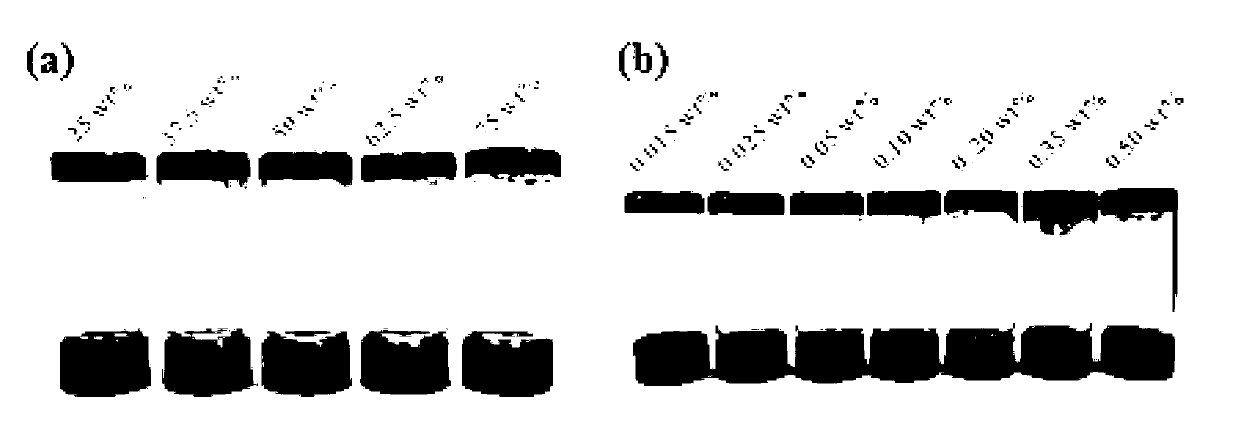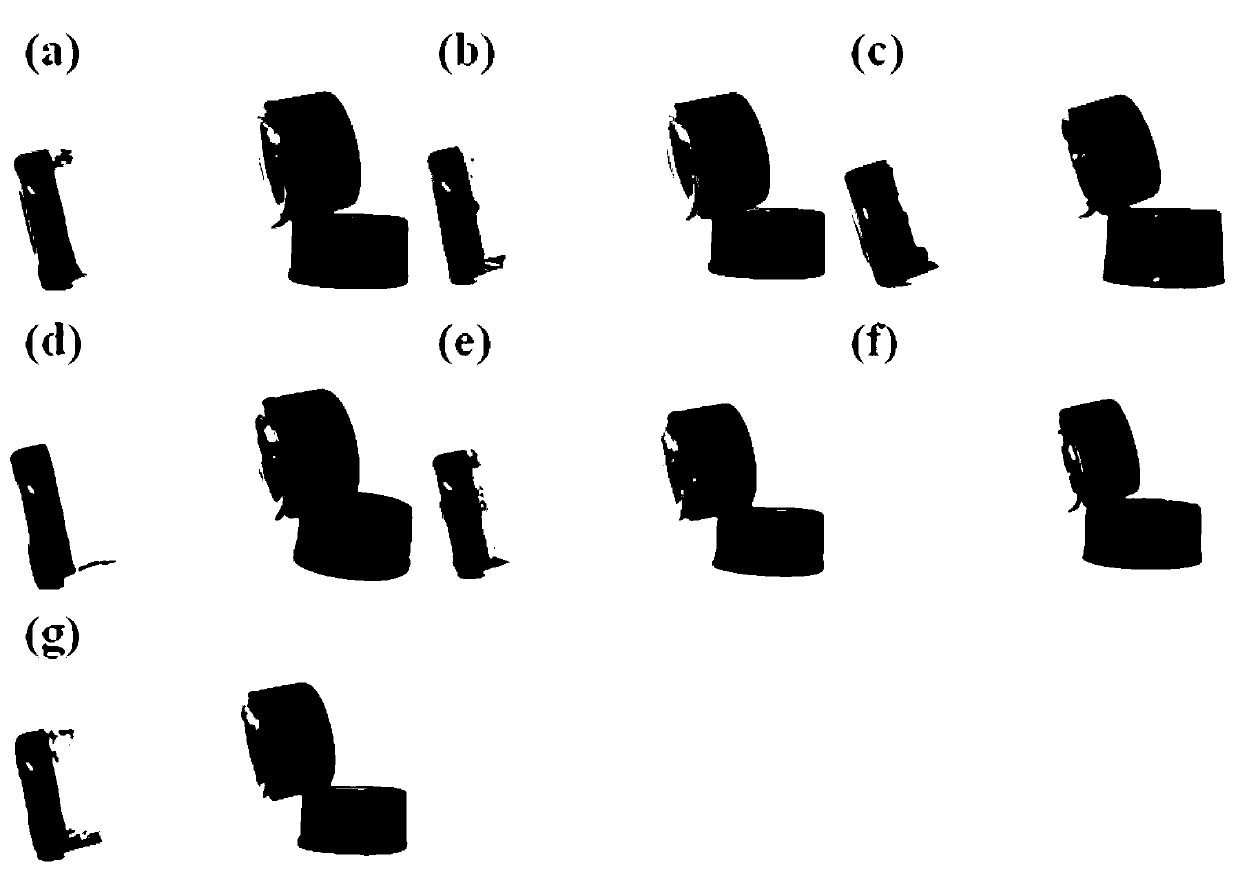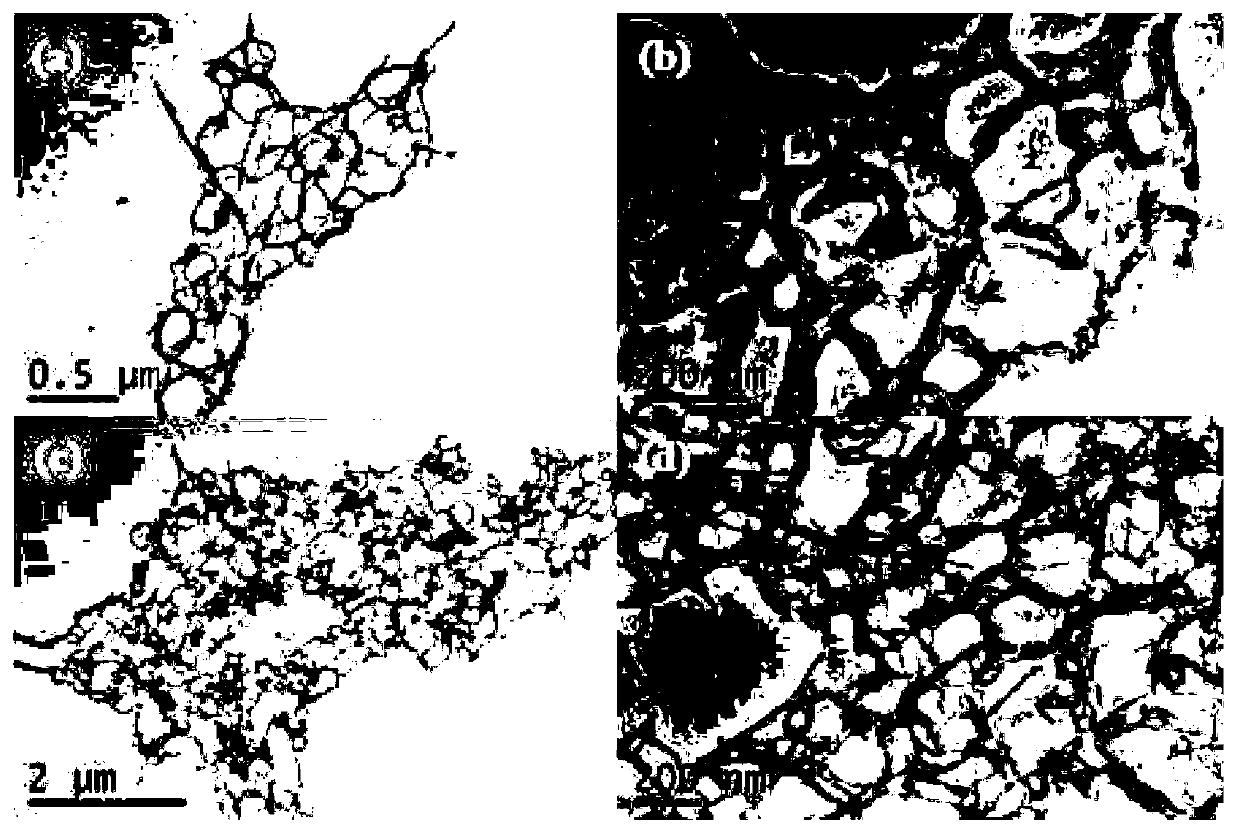Application of multi-component super-molecule hydrogel as adhesion agent
A supramolecular hydrogel and adhesive technology, applied in the direction of non-polymer adhesive additives, adhesives, adhesive types, etc., can solve the problem of weak adhesive force, irreversible adhesive behavior, and only one-time use Use and other issues
- Summary
- Abstract
- Description
- Claims
- Application Information
AI Technical Summary
Problems solved by technology
Method used
Image
Examples
Embodiment 1
[0063] Embodiment 1, preparation supramolecular hydrogel
[0064] 1) Take 1 mL of oxidized carbon nanotube aqueous solution with a concentration of 4 mg / mL, add 1 mL of polyethylene polyamine, seal the system and heat it in a water bath at 50 °C for 30 s;
[0065] 2) The resulting mixture was kept at 12°C for 10 minutes to obtain a carbon nanotube / polyethylene polyamine supramolecular hydrogel.
[0066] Then, according to the above steps, by adjusting the mass ratio of oxidized carbon nanotubes to polyethylene polyamine (1:33-3500) and the mass percentage of water (25%-90%), a series of hydrogels with compositions were prepared. .
[0067] figure 1 It is a digital photo of the carbon nanotube / polyethylene polyamine supramolecular hydrogel obtained in Example 1.
[0068] in figure 1 (a) In the hydrogel shown, the concentration of oxidized carbon nanotubes is 0.2wt%, and the water content is 25wt%, 37.5wt%, 50wt%, 62.5wt% and 75wt% from left to right; figure 1 (b) The water...
Embodiment 2
[0073] Embodiment 2, preparation supramolecular hydrogel
[0074] 1) Take 1 mL of oxidized carbon nanotube aqueous solution with a concentration of 4 mg / mL, add 1 mL of branched polyethyleneimine with a molecular weight of 300, seal the system and heat it in a water bath at 50 °C for 30 s;
[0075] 2) The resulting mixture was kept at 12°C for 6 hours to obtain a carbon nanotube / polyethyleneimine supramolecular hydrogel.
[0076] Then, according to the above steps, a series of hydrogels were prepared by adjusting the mass ratio of carbon nanotubes to polyethyleneimine (1:33-3500) and the mass percentage of water (25%-75%).
[0077] A digital photo of a hydrogel of a composition prepared in this example (the concentration of oxidized carbon nanotubes is 0.2wt%, the water content is 50wt%, and the mass ratio of oxidized carbon nanotubes to polyethyleneimine is 1:250) is as follows figure 2 (b) shown.
Embodiment 3
[0078] Embodiment 3, preparation supramolecular hydrogel
[0079] 1) Take 1mL of graphene oxide aqueous solution with a concentration of 3mg / mL, add 1mL of polyethylene polyamine, seal the system and heat it in a water bath at 50°C for 30s;
[0080] 2) The resulting mixture was kept at 12°C for 12 hours to obtain a graphene / polyethylene polyamine supramolecular hydrogel.
[0081] Then, according to the above steps, a series of hydrogels were prepared by adjusting the mass ratio of graphene oxide to polyethylene polyamine (1:33-3500) and the mass percentage of water (25%-90%).
[0082] A digital photo of a composition of hydrogel prepared in this embodiment (the concentration of carbon nanotubes is 0.15wt%, the water content is 50wt%, and the mass ratio of graphene oxide to polyethylene polyamine is 1:333.3 is as follows figure 2 (c) shown.
PUM
| Property | Measurement | Unit |
|---|---|---|
| bond strength | aaaaa | aaaaa |
Abstract
Description
Claims
Application Information
 Login to View More
Login to View More - R&D
- Intellectual Property
- Life Sciences
- Materials
- Tech Scout
- Unparalleled Data Quality
- Higher Quality Content
- 60% Fewer Hallucinations
Browse by: Latest US Patents, China's latest patents, Technical Efficacy Thesaurus, Application Domain, Technology Topic, Popular Technical Reports.
© 2025 PatSnap. All rights reserved.Legal|Privacy policy|Modern Slavery Act Transparency Statement|Sitemap|About US| Contact US: help@patsnap.com



